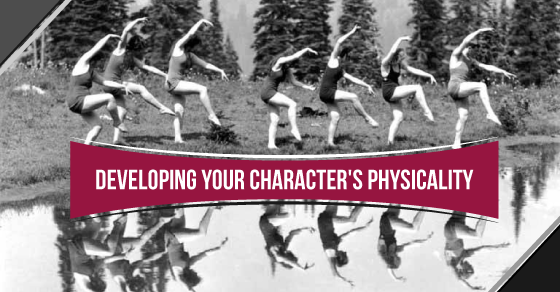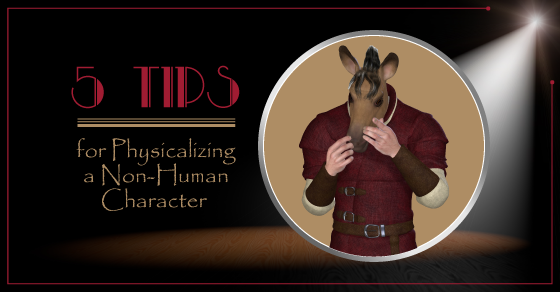Developing Your Character’s Physicality from Head to Toe
No matter whether you are performing a mime piece, tableau, monologue, or scene, your physicality is part of your “actor’s toolkit.” Physicality, along with your voice and imagination, helps you to tell a story. As an actor, it is important to develop your character’s physicality so that it is different from your own.
The drama classroom is a great place for students to explore different physical attributes that they can use to make characters unique and real. These attributes can also be utilized during the rehearsal process of a show.
Going head to toe is useful for developing a character’s physicality; that way, every body part is addressed and none of them are skipped over. Have students respond to the journal questions below or as part of a character profile that includes ideas about how their character’s physicality works. For each question, have students think of their character and make a specific choice.
Head, Face, & Neck
- Your face is one of the first things someone else will notice when they see or meet you. Think about how your character’s face shows emotions/feelings. Does the character show their emotions clearly on their face or do they mask their feelings (i.e. have a “poker face”)?
- Does the character look others in the eye, or do they look away, down, or in another direction? Why? (This is a good indicator of your character’s confidence level, or else if they’re lying or distracted.)
- Does the character have a signature facial expression, or “resting face”? Do they tend to smile, sneer, grimace? Does this change throughout the play?
- Does the character have a physical ailment on their face or head (for example: blindness, deafness, missing teeth, stiff neck)? These will affect how the character moves his/her head and face.
Upper Body (shoulders, arms, hands, chest, abdomen)
- Does the character have good posture? Do they stand up straight or slouch?
- Does the character swing their arms when they walk, or hold them tightly at their sides? Do they cross their arms, hug themselves, or wring their hands?
- How big are the character’s gestures? Do they use their hands while they speak?
- Do they touch other characters? Which ones? How do they touch them?
- Does the character breathe deeply or take shallow breaths? Is breathing easy or difficult?
Lower Body (lower back, hips, pelvis, legs, feet)
- Does the character move slowly or quickly? Why? Do they limp or stumble?
- Is the character light on their feet or do they plod and stomp along? Do they lift their feet when they walk?
- Do the character’s feet turn inwards or outwards when they walk? Do they walk heel-first or toe-first?
Additional Physicality Thoughts
- How old is your character? (A twelve year old, a fifty year old, and an eighty year old will all move differently.)
- How physically fit is your character? Are they strong or weak? Have they ever been an athlete?
- When they walk, do they lead with their forehead? Chest? Or perhaps they lead with their lower body, like with their pelvis or knees?
- Does their weight affect how they move? Do they move in a way that is unusual for their physical build (for example: a sprightly sumo wrestler)?
- What past or present physical challenges/ailments has your character had, if any? Injuries? Sickness? Pregnancy? Missing limbs? How does that affect how they move?
- Does the character need assistance to move? Do they walk with a cane, crutch, walker, assistance animal, or a human assistant?
- Does the character even walk? Perhaps they crawl, creep, or roll (i.e. via a wheelchair, on a skateboard, or by doing somersaults).
- Does the character’s physicality change at any point? When? What causes the change? How does that affect the character?
These questions are just the tip of the iceberg when it comes to thinking about a character’s physicality. Students may come up with many more thoughts and questions while exploring their characters. Once students have a clear plan for how their characters physically express themselves, the drama classroom is the perfect place for them to get up, try it out, and explore!



